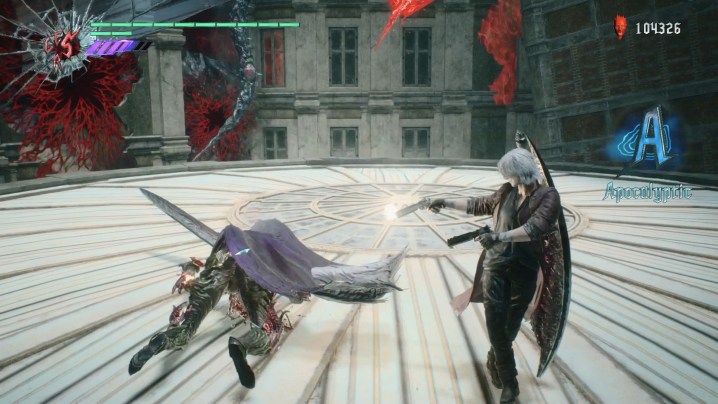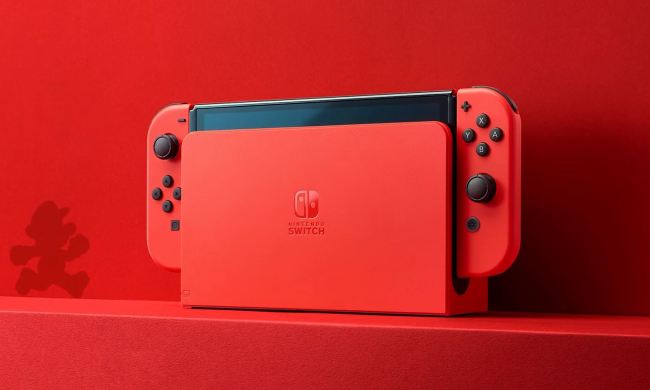
While playing through Devil May Cry 5, I started to feel extremely nostalgic. Though DMC 5 modernizes the series’ action gameplay to make it undeniably fresh, it still holds the same structure from the original trio of PS2 titles. Even stylistically, as seen in the bullet-ridden stills at the end of each mission displaying your rating, DMC 5 harks back to its glorious beginnings.
It’s my hope that DMC 5 will wind up marking the beginning of a new era for this wonderful franchise. More than that, though, I hope it leads to a more widespread return to a largely dormant concept in AAA game design: linearity.
It’s funny, really. In the early 2000s before the open world boom, games like Devil May Cry were the norm, not the exception. Nowadays, however, it’s increasingly rare for AAA games in the action space to take you from one designed mission to the next.
After finishing DMC 5, I tried to think of the last AAA action game I played that could be described as linear. I’m thinking it was Dishonored 2, at the end of 2016, more than two years ago. Each of its levels had optional side quests, but they didn’t get in the way of the critical path. Uncharted 4: A Thief’s End launched earlier that same year, which mastered the art of creating a sense of openness inside a linear path. Before that? Bayonetta 2 for Wii U in 2014.

A contest of content
For the past several years, the majority of popular AAA games are either multiplayer-oriented or open world. Think: Overwatch, the Call of Duty franchise, Horizon Zero Dawn, The Legend of Zelda: Breath of the Wild, God of War, Red Dead Redemption 2, the Assassin’s Creed franchise, Tom Clancy’s The Division, Destiny 2, Super Mario Odyssey, Grand Theft Auto V, Fallout 4, the Far Cry franchise, and Marvel’s Spider-Man.
Sure, sports games top the charts, and first-person shooters like Battlefield 1 and Titanfall 2 have linear, mission-based campaigns. But even Call of Duty ditched its campaign with Black Ops 4, and Nintendo moved its two most popular franchises to true open worlds with their latest entries.
Just to be clear, I think a number of these games are good, some even great, but many of them featured content that I would either call unnecessary or plain boring. I touched on this idea recently when writing about the phenomenal indie game Ape Out, but after playing DMC 5, I’m realizing that we shouldn’t have to rely on indies to provide streamlined experiences.

Part of this far-reaching trend of open world games comes from where the industry is at in general with content models. The “games as a service model” obviously goes hand-in-hand with open world design and free-to-play games like Apex Legends and Fortnite, which are typically seen as better avenues for revenue than traditional single player campaigns.
Former Uncharted director Amy Hennig recently remarked on current industry trends in an interview with VentureBeat. “I’ve said that I don’t think a game like the first Uncharted, even though it was the foundational footprint for that series, would be a viable pitch today,” Hennig said. “Now you have to have a lot of hours of gameplay. Eight would never cut it. Usually some sort of online mode. And of course, you see where things are pushing, toward live services and battle royale and games as a service.”

Devil May Cry 5 admittedly has more like 15 hours of content, but the general idea is the same. If DMC 5 doesn’t sell well, it will perhaps be viewed as another indictment on the ability of linear single-player games to thrive today. I hope not, but there seems to be a prevailing wisdom backed up by sales figures that games with steady content streams, whether they be multiplayer or open world experiences, are what work nowadays.
I take some comfort in the fact that DMC 5 had Capcom’s second best ever launch on PC, but will it make enough to convince studios beyond just Capcom that players still crave single player, and specifically linear, experiences?
That ol’ familiar loop
There are multiple reasons why I want more games like Devil May Cry 5. For starters, I can play DMC 5 for an hour and feel like I made tangible progress, completing a mission or two. With open world games, an hour spent often leads to the feeling that you just made more work for yourself. Let me explain.
Yes, each activity, whether it be a story mission or a side quest, is technically progress. But how often do you complete a mission in an open world game without discovering several more in the process? Or without getting sidetracked? Or without feeling overwhelmed by the sheer number of systems and objectives you have to pay attention to in your quest to merely see the conclusion to a story in less than a few dozen hours.

With the exception of three nearly perfect open world games in recent years — Breath of the Wild, Red Dead Redemption 2, and God of War — all open world games are padded with content that is neither memorable nor essential to the enjoyment of the critical path.
Sometimes, like in Anthem, you’re forced to engage with this superfluous content in order to even move on to the good stuff. On top of that, this “good stuff” is often repetitive, purely because it’s incredibly hard to come up with 30-plus hours of interesting mission content that doesn’t retread tired ideas on loop. The pursuit of content has led to a copy/paste style of mission design that makes otherwise beautiful open worlds, such as Assassin’s Creed Odyssey, become stale rather quickly.
Virtually every modern game wants you to live in its world as much as you live in the real world.
There seems to be a belief that offering players more freedom is inherently good. On the surface, it sure does sound good. Deciding where I want to go and what I want to do without the game forcing me along a certain path? Ten years ago I thought that was the future of games, and a great future at that.
But now that virtually every modern game wants you to live in its world as much as you live in the real world, it’s becoming clearer and clearer that often times it’s better to hone in on what makes a game special, rather than leaving it to player chance to find that something special and forget about all the filler in between. I forget about the filler, sure, but it also clouds the brilliance.

In the 2D era, video games were about gameplay. As we entered the 3D era, the industry gradually latched onto the idea of photo-realism. Who could make the most technically impressive, life-like world? This emphasis on visuals then extended to the design of the worlds themselves.
Who could make the biggest world? Who could make a world filled with NPCs who felt like real people with rich backstories? Who could make dialogue choices matter and impact the story? Who could make the best skill trees and systems on top of systems?
And the worlds keep getting bigger and bigger to the point where you spend the majority of your time traveling from one destination to the next. And the NPCs who occasionally say interesting things keep giving you less and less exciting side quests. And the dialogue choices you carefully consider affect arbitrary loyalty and morality systems that rarely actually matter in the end.
And now we’re inundated with systems that force us to spend almost as much time in menus as we do in the actual game.
Devil May Cry 5 takes you on a linear path through restrained environments, has extremely fun combat mechanics, tells an engaging story at a great pace, and doesn’t overstay its welcome. Its release shouldn’t seem so novel, and open world games shouldn’t be the accepted norm. We need more games like DMC 5.


